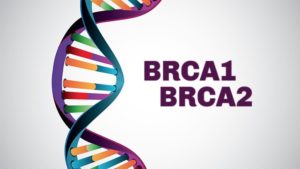Meet Amy. She is 37 years old. She is married. She is a mom to three beautiful children. She is a daughter, a friend and a sister. She is also a provivor.
What is a provivor you may ask….
Well many use the term previvor. However Amy asked me while we were discussing this post “can we use the word “pro-vivor” instead? It’s not as common but I like it because I was PROactive”. Absolutely we can!
So what is a provivor? Provivors are individuals who are survivors of a predisposition to cancer but who haven’t had the disease. This group includes people who carry a hereditary mutation, a family history of cancer, or some other predisposing factor.
Amy’s story starts back when she was a child. She shared with me that from an early age, she and her brother could not help but notice how different their features were. Sure, not all siblings look alike but their differences seemed to be extreme. Friends and even family used to tease her about how different she looked. She felt as though she was the “brown sheep” of the family. Sometimes they joked about how she must have been adopted, stolen, or had joined the family in some other less-“traditional” way. When she attempted to discuss her questions parentage her mother was dismissive and laughed it off.
In 2018, Amy and her older brother decided to take DNA tests via Ancestry.com. If they could not get answers from their family they would find it themselves. She was surprised to say the least when her results revealed that she was in fact half Ashkenazi-Jewish! She had always been told she had always been told she was almost exclusively Polish. Amy decided her next step is to test with 23andme. She hoped this would help her discover more about where she came from.
When she tested with 23andme, she decided to pay extra for their health information. Knowing that Ashkenazi Jews are at higher risks for certain diseases, and not having any family medical information on on that side, she wanted to be as proactive as possible. Amy received her results back and they showed positive for the BRCA2 gene variation.  A positive test result which meant that she had a mutation in one of the breast cancer genes, for her it was the BRCA2, and therefore she had a much higher risk of developing breast cancer or ovarian cancer compared with someone who doesn’t have the mutation.
A positive test result which meant that she had a mutation in one of the breast cancer genes, for her it was the BRCA2, and therefore she had a much higher risk of developing breast cancer or ovarian cancer compared with someone who doesn’t have the mutation.
Amy was able to book an appointment to see a geneticist, who ordered a blood test to confirm her results. Another positive. The geneticist recommended she have her ovaries out as soon as possible, because ovarian cancer is typically missed until it is too late. BRCA2 isn’t quite as dangerous for breasts, and the current protocol is to have mammograms and breasts MRIs, alternating, every 6 months. Not knowing her paternal family history complicated things. If she had relatives that have had it, they might have to be more aggressive. She also explained she has dense breast tissue. High breast density means that a person has more fibrous tissue than fatty tissue in the breast. which can make it harder to find lumps.
When taking all of the factors into account she made the difficult decision to have a double mastectomy. Though she was terrified of going under general anesthesia, the watch and wait for the rest of her life option sounded much worse. Not to mention the time off work to have the tests done, the copays involved, and the anxiety of waiting for results every 6 months.
Amy explained to me that since her kids have a 50/50 chance of inheriting this gene, they will all need to be tested when they are adults. BRCA2 can lead to male breast cancer, as well as prostate, so my son is just as much at risk as my daughters.
To be cont….
